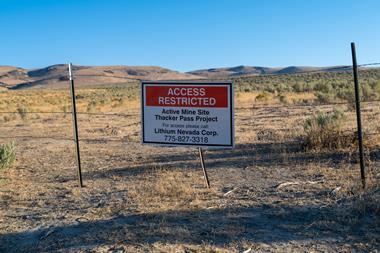One of the key transitions the world must undergo to avert catastrophic climate change is decarbonising our energy production. As our features editor Neil Withers noted recently, some countries have a headstart here: Norway and Sweden have an abundance of hydroelectric power, and France has become an exception in maintaining a large fleet of nuclear power stations. But for most of the world, the picture is very different: almost 60% of global electricity production still comes from coal and gas-fired power stations. And if we include transport and heating, the picture is even worse.
One of the key transitions the world must undergo to avert catastrophic climate change is decarbonising our energy production. As Neil Withers noted in our previous issue, some countries have a headstart here: Norway and Sweden have an abundance of hydroelectric power, and France has become an exception in maintaining a large fleet of nuclear power stations. But for most of the world, the picture is very different: almost 60% of global electricity production still comes from coal and gas-fired power stations. And if we include transport and heating, the picture is even worse.
The pace of change here has been slow, but it is expected to increase dramatically in the next decade. In 2019, more electricity was produced in the UK from renewable energy sources than fossil fuels for the first time ever – most of that coming from solar and wind power – and the UK government has said its ambition is for renewable to supply 100% of the country’s electricity by 2035. In 2021 in the EU, around 37% of energy production came from renewables and that is expected to rise to 70% by 2030.
The transition will also require a change in how energy supply operates, however. Fossil fuels offered generation on tap, with the energy stored in the bonds of hydrocarbon molecules ready to be released upon ignition. For renewable sources, we can’t call upon the wind or summon the sun. That means energy production must adapt to be more flexible and move from producing energy on-demand to capturing and storing it. A central component of energy policies around the world is therefore battery storage.
In this collection, we look at how chemistry is enabling that transition. And in particular, its vital role in developing existing and new battery technologies to supply the rising demand for energy storage solutions at scales from the personal car to the metropolis.
In this issue, we look at how chemistry is enabling that transition. And in particular, its vital role in developing existing and new battery technologies to supply the rising demand for energy storage solutions at scales from the personal car to the metropolis.
The workhorse here is the lithium-ion battery, and production of these cells has rocketed in recent years thanks in large part to their role in electric vehicles. As our feature explains, they may be an established technology but there are still many routes to optimising architectures and chemistries to improve their performance by increasing their energy density, for example, or making them lighter. Next generation technologies such as lithium–air are still a distant prospect, but their potential is enormous.
The workhorse here is the lithium ion battery, and production of these cells has rocketed in recent years. As our feature on pXX explains, it may be an established technology but there are still many routes to optimising the architectures and chemistries to improve their performance by increasing their energy density, for example, or making them lighter. Next generation technologies such as lithium–air are still a distant prospect, but their potential is enormous.
In 2021, global production of lithium topped 100,000 tonnes, and more than three quarters of that ended up in batteries. Just as with fossil fuels in the 20th century, this demand for lithium is now reshaping the geopolitical landscape. Accidents of geography have afforded that element to Argentina, Chile, Australia and a few others, and they are being heavily courted as countries compete to secure the supplies they need. However, lithium is unlikely to be the technology that delivers grid-scale, long-term storage. It’s still not yet clear which approach will emerge as the winner here, with several different approaches currently being investigated to meet this need.
Ultimately, the sustainable energy provided by batteries is only truly sustainable if we close the loop on the life cycle of batteries themselves. The final story in our collection looks at the companies working on recycling technologies to recapture and reuse those essential resources. Lithium is not scarce, but extracting it has a significant environmental impact. Our clean energy infrastructure mustn’t come with hidden costs.
Ultimately, the sustainable energy provided by batteries is only truly sustainable if we close the loop on the life cycle of batteries themselves. Our story on pXX looks at the companies working on recycling technologies to recapture and reuse those essential resources. Lithium is not scarce, but extracting it has a significant environmental impact. Our clean energy infrastructure mustn’t come with hidden costs.












No comments yet